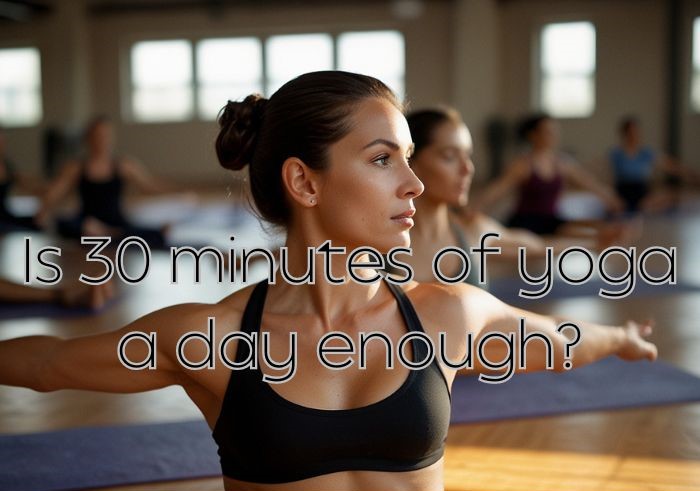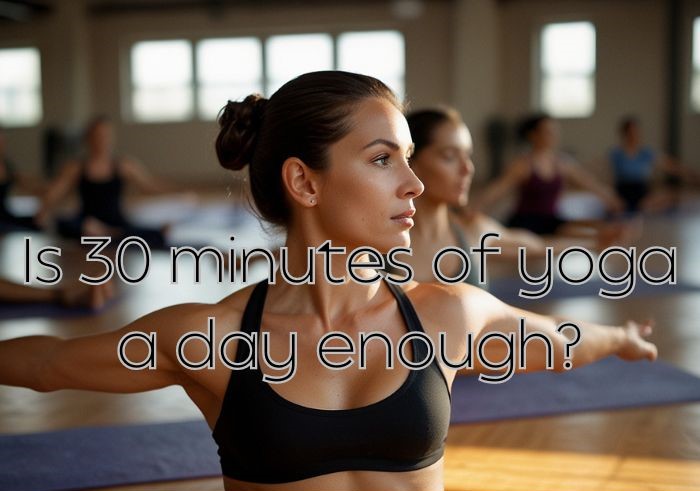If you’re considering adding yoga to your daily routine, you may be wondering if 30 minutes of yoga a day is enough to make a difference in your overall health and well-being.
The answer is yes, 30 minutes of yoga a day can be enough to improve your physical and mental health.
Jane Benson from Bikram Yoga Mornington takes Yoga as a low-impact form of exercise that can help increase flexibility, strength, and balance. It also has mental health benefits, such as reducing stress and anxiety.

While some people may prefer longer yoga sessions, 30 minutes a day can be an effective way to incorporate yoga into your daily routine and reap the benefits.
It’s important to note that the effectiveness of 30 minutes of daily yoga depends on the quality of your practice.
To get the most out of your practice, focus on proper alignment, incorporate breathing techniques, and gradually increase intensity.
By paying attention to these factors, you can enhance the physical and mental benefits of your practice and make 30 minutes of yoga a day a valuable addition to your routine.
Exploring the Benefits of Daily Yoga
Yoga is a practice that has been around for thousands of years and is known to provide numerous benefits for both the mind and body.
By practicing yoga for just 30 minutes a day, you can experience a range of physical, mental, and emotional benefits that can improve your overall wellbeing. It is also better have it in a place such as in Bikram Yoga Mornington for a better experience when it comes to executing yoga.
Physical Advantages
Regular yoga practice can help to improve your physical health in many ways. It can increase your mobility, strength, balance, flexibility, and endurance.
By performing yoga poses, you can increase your range of motion and muscle strength, which can lead to improved flexibility and better posture.
Additionally, yoga can help to improve your breathing and relaxation, which can increase your energy levels and reduce stress.
Mental and Emotional Well-being
Yoga is not just a physical practice; it is also a mental and emotional practice.
By incorporating meditation and mindfulness into your yoga sessions, you can improve your mental clarity, reduce stress levels, and increase your inner peace.
Yoga can also help to manage depression and anxiety, as well as improve your overall mental health.
Yoga Practice Essentials
To get the most out of your daily yoga practice, it is important to incorporate certain elements into your routine.

Listening to your body, proper alignment, breathing techniques, and mindfulness are all essential components of a successful yoga practice.
By paying attention to these elements, you can avoid burnout, achieve your fitness goals, and experience the full benefits of yoga.
Health and Lifestyle Impact
The impact of yoga on your health and lifestyle can be significant. Regular yoga practice can improve your cardiovascular health, boost your immune system, and increase your energy levels.
It can also help you to discover more about yourself and your body, leading to a greater sense of self-awareness and self-discovery.
Misconceptions and Clarifications
There are many misconceptions about yoga, including the idea that it is only for the flexible or that it is a form of religion.
However, yoga is for everyone and can be adapted to suit any level of fitness or flexibility. It is also not a religion, but rather a practice that can be integrated into any lifestyle or belief system.
Incorporating Yoga into Your Routine
If you’re looking to incorporate yoga into your daily routine, starting with a 30-minute practice is a great way to begin. Here are some tips to help you design a practice that works for you.
Designing a 30-Minute Practice
When designing a 30-minute yoga practice, it’s important to consider your fitness level and goals.
If you’re new to yoga, it’s best to start with a gentle practice that focuses on basic poses, such as warrior poses, and includes a cool-down period.
If you’re more experienced, you may want to focus on more challenging poses and incorporate vinyasa flow or yin yoga.
Selecting the Right Yoga Style
There are many different styles of yoga to choose from, including vinyasa, hatha yoga, and yin yoga.
Each style has its own unique benefits and challenges, so it’s important to choose the style that best suits your needs and goals.
If you’re looking to improve your flexibility and strength, vinyasa or hatha yoga may be the right choice. If you’re looking to reduce stress and increase body awareness, yin yoga may be a better fit.
Yoga Gear and Environment
When practicing yoga, it’s important to have the right gear and environment.
Make sure you have a comfortable yoga mat, blocks, and straps if needed. You may also want to invest in eco-friendly yoga gear to support your practice and the environment.
Additionally, create a calm and peaceful environment for your practice, free of distractions and noise.
Setting Realistic Goals and Expectations
Setting realistic goals and expectations is key to a successful yoga practice.
If you’re new to yoga, start with a 30-day yoga challenge to build consistency and create a habit.
Set small goals for each practice, such as mastering a new pose or increasing your flexibility.
Remember, yoga is a journey, and progress takes time and dedication.
Incorporating yoga into your daily routine can have many health benefits, including increased flexibility, reduced stress, and improved body awareness.
With the right practice, gear, and environment, you can create a sustainable and enjoyable yoga routine that supports your fitness goals and overall wellbeing.
